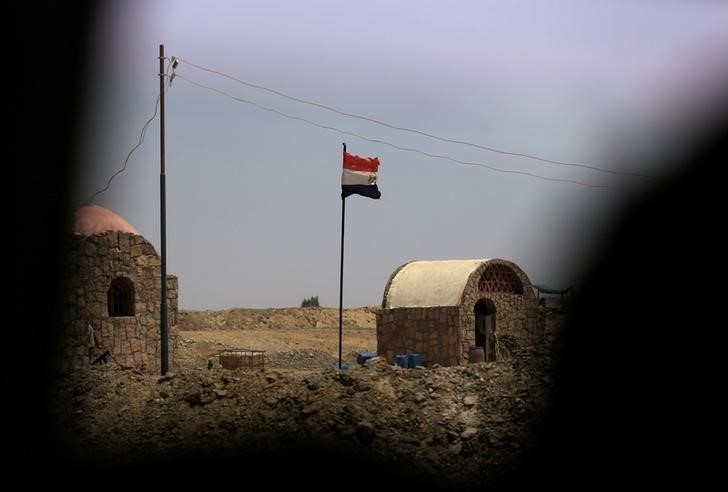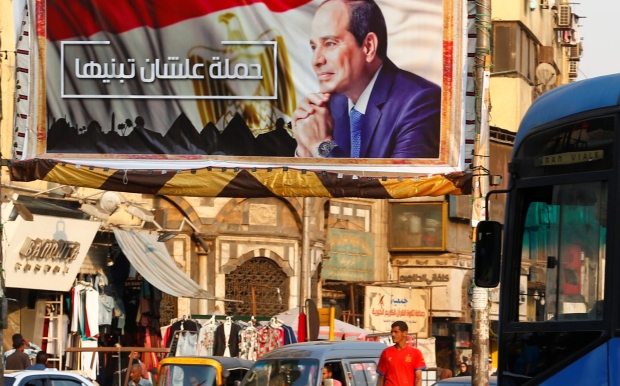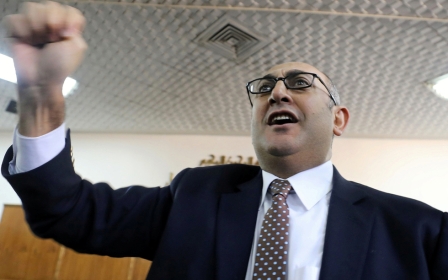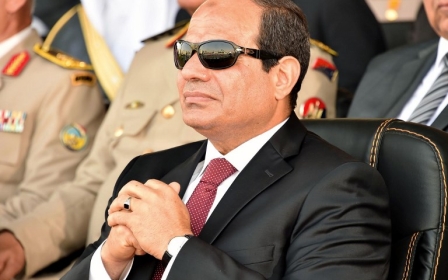Why Egypt has a growing insurgency problem

"There was about 10 or 12 of them…young kids between 20 and 21…they attacked over 70 of us with our new guns and new armoured vehicles," said an injured officer to a medic in a six-minute leaked audio describing the attack on security forces in the Western Desert, on 21 October.
As ever, the Ministry of Interior's official statement contradicted both the witnesses' accounts and the unofficial statements made by security officials to media outlets.
According to the ministry, the death toll was 16 policemen and 15 attackers. But medics and security sources gave a death toll of more than 50, with no losses reported on the side of the attackers.
Brutal repression
This is the fourth major attack in the Western Desert since the beginning of 2017, not to mention minor skirmishes. It comes as a part of an unprecedented wave of brutal repression and insurgent violence, that rapidly escalated since a July 2013 military coup, followed by a July-August 2013 series of massacres against anti-coup protestors.
The semi-official Ahram Centre for Political and Strategic Studies recorded 1,165 attacks on armed forces and police between 2014 and 2016. This translates into a sustained, daily campaign for three years, with an evident escalation in 2017.
One part of the tragedy is that the figure isn't comprehensive. The other part of it is that General Abdel Fattah al-Sisi staged the coup and was "elected" on a "preventive counterterrorism" platform. There isn't much progress on that track though.
More critical than the quantity, intensity and the geographical scope, is the quality of the insurgents' tactics
The security situation in Egypt deteriorated from a low-level insurgency featuring one main organisation active between August 2009 and July 2013 in the remote northeastern parts of Sinai, into at least five mid-to-low capacity insurgent organisations operating all-over the Sinai Peninsula, the Valley from Damietta in the north to Asyut in the south, and the Western Desert.
This doesn't include the decapitated organisations and small cells scattered across the densely populated, impoverished districts of Cairo and the Nile Valley. But more critical than the quantity, intensity and the geographical scope, is the quality of the insurgents' tactics. The Wahat Road attack is a case in point.
Textbook ambush: 12 hours of hell
How and why the security convoy arrived at the 135th kilometre on the Wahat Highway towards the Bahariyya Oasis remains unclear. The initial reports stated that the convoy was on its way to arrest eight suspected members of HASM, an armed organisation camping in the desert.
The injured officer, however, accuses the informant, who provided the intelligence, of being a double-agent who not only led the convoy into an ambush but also identified the captured officers and separated them from the captured soldiers.
Regardless, the attack was executed like a textbook ambush. Assuming the correctness of the figures given by the injured officer and the other leaked communications between the Ministry of Interior commanders in Cairo and the fleeing soldiers, the manpower ratio was about 7:1 against the insurgents.
Once the convey reached a lowland valley surrounded by hills, the attack ensued. In the beginning of the battle, the front and the rear armoured vehicles were destroyed simultaneously with what seemed to be rocket-propelled grenades (the type is unclear, but if it is unguided in the darkness, it requires high-skill, close proximity, and/or a lot of luck).
This left the middle vehicles blocked. Then it was a duck shoot for the insurgents, who fired from the hills. Some of the surviving officers and soldiers were captured. "If you were an officer you would get a bullet… they wanted to send a message to the soldiers. …if you are a soldier who fired, you get a bullet in the hand and leg…if you are soldier who didn't fire and threw the weapon, you live," said the injured officer.
The tactical withdrawal route of the attackers remains unclear. But they made sure to collect the navigation devices, petrol, tyres, two medium machine guns, automatic rifles and other weapons, according to the officer.
The Ministry of Interior wanted an exclusive "victory" without the army's involvement and did not attempt to coordinate with the Ministry of Defense (MoD)
They also had time to chase fleeing officers and soldiers, after taking one of them, a Captain Mohammed al-Hayes, as a hostage. "They asked him if he would rather live or die?... He said he wants to live…so they took him."
From the beginning of the attack till the arrival of aerial reinforcements, the episode lasted for approximately 12 hours.
Troubles persist
Assuming the correctness of the unofficial figures (58 deaths: 23 officers and 35 soldiers), this would be the worst loss for Egypt's Ministry of Interior forces, even compared to the times when Egyptian policemen were the outnumbered insurgents fighting the British forces in the battle of Ismailia in January 1952 (about 50 deaths).
The ambush rendered the usual results: sacking some of the generals. This included the heads of the National Security Sector (formerly the notorious State Security Investigations) and the National Security Branch in Giza; also the director of operations in the Central Security Sector, and the chief of Giza Security Directorate.
The chief of staff of the Egyptian Army and Sisi's relative, General Mahmoud Hegazy, was also sacked, despite not being responsible for the Wahat blunder.
Insurgencies do not pose major threats to legitimate, well-institutionalised governments following competent counterinsurgency practices
The Ministry of Interior wanted an exclusive "victory" without the army's involvement and did not attempt to coordinate with the Ministry of Defence. Hegazy's removal probably had other political reasons.
Rivalries, spoiler tactics and even armed clashes between competing armed institutions have a long history in Egypt.
But even if there was better coordination, better training, better soldiers, better morale and reasons to fight, and better intelligence, a favourable outcome is less likely in this environment.
Egypt's security problem
Major parts of Egypt's security problem belong to the macro-level, rooted in the ongoing crisis of national reconciliation, extremely polarised socio-political environment and the absence of a non-violent conflict-resolution mechanism.
Also, the unprecedented brutality of the ruling regime towards dissent, the lack of security sector reform, and the structural deficiency in civil-military relations fuel the violence.
In general, insurgencies do not pose major threats to legitimate, well-institutionalised governments following competent counterinsurgency practices.
This is not the case in Egypt where legitimacy is contested, institutions are corrupt, and the counterinsurgency practices have been both illegal and ineffective at the same time.
Overall, failing counterinsurgency/counterterrorism efforts will almost certainly require significant domestic reforms and policy changes in Egypt, and much more than changing a few generals.
- Dr Omar Ashour is a senior lecturer in security studies at the University of Exeter. He the author of The De-Radicalization of Jihadists: Transforming Armed Islamist Movements, and How ISIS Fight: Military Tactics in Iraq, Syria, Libya and Egypt (forthcoming). He can be reached at [email protected] or @DrOmarAshour
The views expressed in this article belong to the author and do not necessarily reflect the editorial policy of Middle East Eye.
Photo: A security check point in the Egyptian western desert and the Bahariya Oasis in Siwa, southwest of Cairo, Egypt May 15, 2015. Picture taken May 15 2015 (REUTERS/Amr Abdallah Dalsh)
Middle East Eye propose une couverture et une analyse indépendantes et incomparables du Moyen-Orient, de l’Afrique du Nord et d’autres régions du monde. Pour en savoir plus sur la reprise de ce contenu et les frais qui s’appliquent, veuillez remplir ce formulaire [en anglais]. Pour en savoir plus sur MEE, cliquez ici [en anglais].







